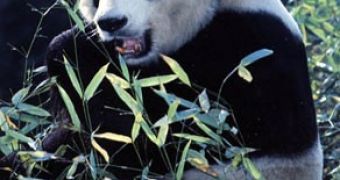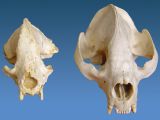The cute aspect of the giant panda, resembling a living teddy bear, turned this animal into the symbol of the fight for the preservation of endangered species. Even if a real bear, this species eats 99 % bamboo.
Now researchers have discovered the fossil skull of the earliest known bear from the panda genus (Ailuropoda) in southern China. The skull is 2-3 million years old and the ancestor of modern giants, Ailuropoda microta, appeared to be "pygmy" (half the size of the current species) and already adapted to the bamboo diet.
"It really is a miniaturized version of the living giant panda. A few fossil teeth from A. microta had previously been found, but the creature's size remained a mystery until now. The first complete skull provides a far richer picture of the bear's biology" said Russell Ciochon of the University of Iowa.
The skull was discovered as being embedded in the wall of a limestone cave in China's Guangxi Zhuang Autonomous Region. "The new fossil proves that pandas' dietary preference for bamboo evolved quite early. The panda lineage has been evolving for several million years totally separated from their traditional bear ancestry," said Ciochon.
Bamboo feeding led to the evolution of strong jaws and robust teeth for grinding down tough bamboo stems. Modern giant pandas also posses a "false thumb" with which they can strip the leaves off bamboo stalks, and more fossils of A. microta could explain if the pygmy giant panda had the same unusual adaptation.
"It is very much needed to eat bamboo. If this was a committed bamboo eater early on, one would expect [the false thumb] adaptation was evolving." said Ciochon.
There is another panda species, the red or lesser panda, a raccoon-like animal, which also has a false thumb. But this species is not a bear but a distinct group inside the carnivores, somehow related to raccoons and weasels, and in other times, these animals were spread also in North America and Europe, while the panda bears have been strictly linked to China. The new finding reveals that body size in the panda bear lineage has largely fluctuated. A more recent panda bear, living less than a million years ago, was bigger than the modern giant pandas.
Panda bears have also moved their areal linked to Ice Ages clime shifts in the past three million years.
"When the [past] ice ages were occurring in northern China, the distribution of bamboo moved southward, as did the giant panda," said Ciochon.
Today only 3,000 giant pandas live in the wild, in mountain bamboo forests in southwestern China.

 14 DAY TRIAL //
14 DAY TRIAL // 
